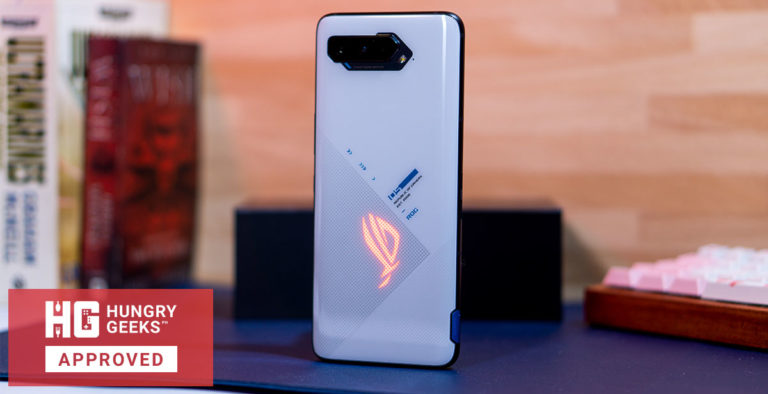
The ASUS ROG Phone 5 has now been made faster in almost all respects especially with its new chipset and has received a new outer design to reflect the homogenize the ROG aesthetic across different devices. But does ASUS’ latest take in a flagship gaming smartphone offer everything an increasingly demanding mobile gamer is asking?
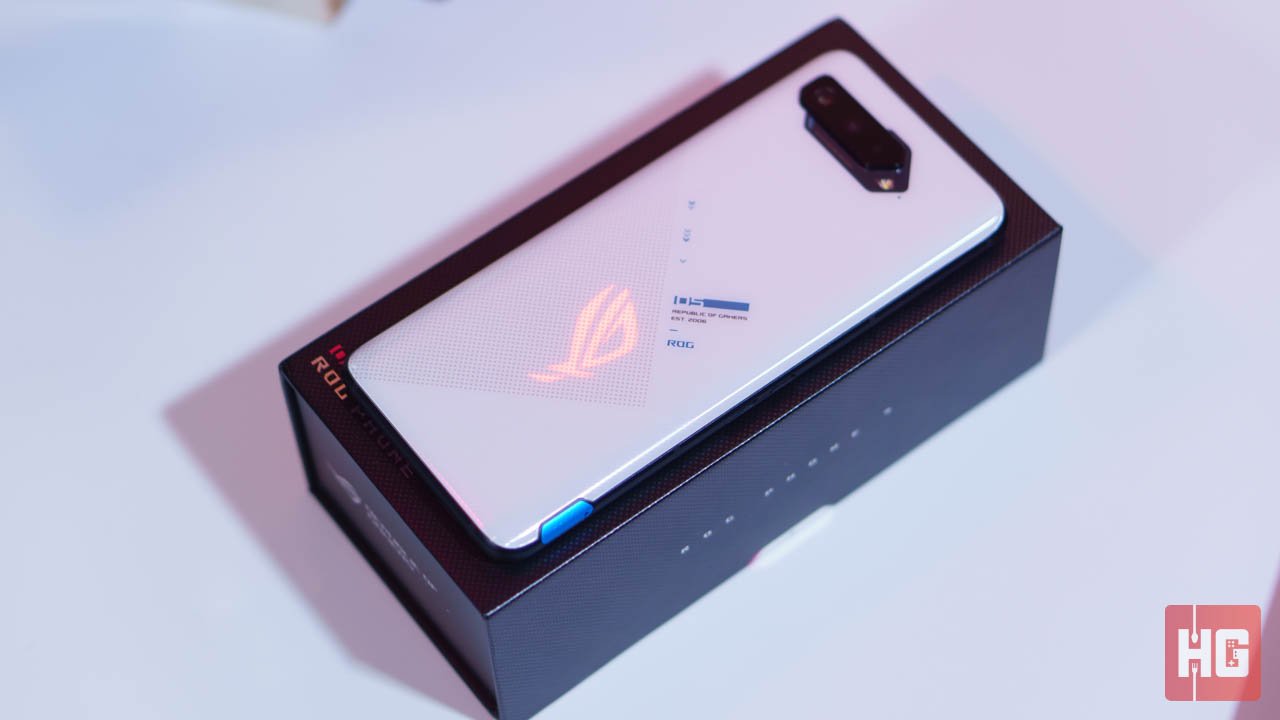
| Chipset | Qualcomm Sapdragon 888 |
| Screen | 6.78-inch Samung AMOLED, 2448 x 1080, 144Hz, 1,200nits peak brightness, Delta-E < 1, 111.23% DCI-P3, HDR10+, Corning Gorilla Glass Victus |
| RAM | 16GB LPDDR5 |
| OS | Android 11 with ROG UI |
| Rear Camera | 64MP f/1.8 Main, 13MP f/2.4 Ultrawide, 5MP f/2.4 Macro |
| Front Camera | 24MP f/1.8 |
| Storage | Up to 256GB UFS 3.1 |
| Network | 5G |
| Connectivity | Dual-Band WiFi 802.11ax 2×2 MIMO, Bluetooth 5.2, aptX Adaptive, WiFi Direct, NFC, USB Type-C |
| Battery | 6,000mAh, 65W HyperCharge |
| Others | Dual Front-Facing Speakers, In-Display Fingerprint Scanner, Face Unlock, AirTrigger 5, Grip Press |
| Colors | Phantom Black, Storm White |
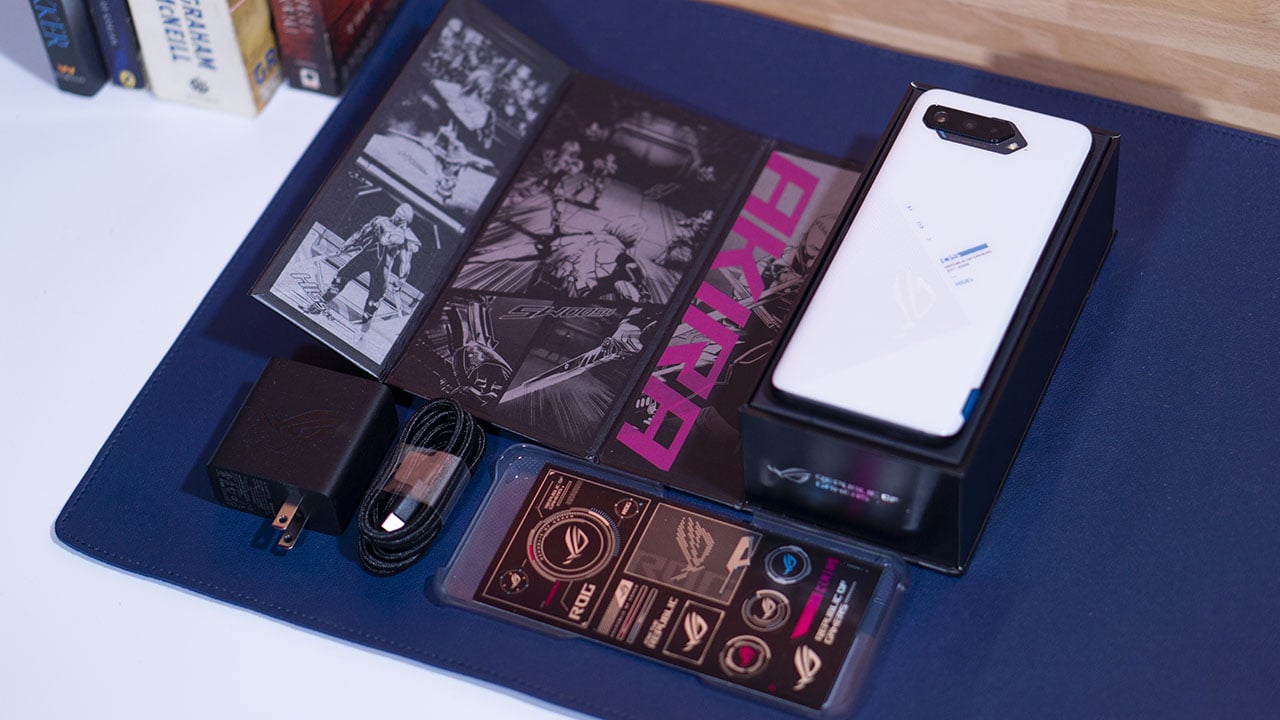
One of the few downgrades that the ROG Phone 5 received is through its packaging. It seems that ASUS is leaving the extravagant unboxing experience but quick AR game will be played via the smartphone using the comic panels found on the flaps on the packaging. A nice touch given that the box has left its hexagonal form.
Accompanying the ROG Phone 5 in its retail form is a 65W wall adapter, a braided USB Type-C cable, an ROG-themed SIM pin ejector, a plastic case, and a few stickers. It seems that ASUS won’t be bundling the AeroActive Cooler anymore with the smartphone, which is a bit disappointing given that it is a flagship-class device and it is required to get the best performance out of the smartphone.
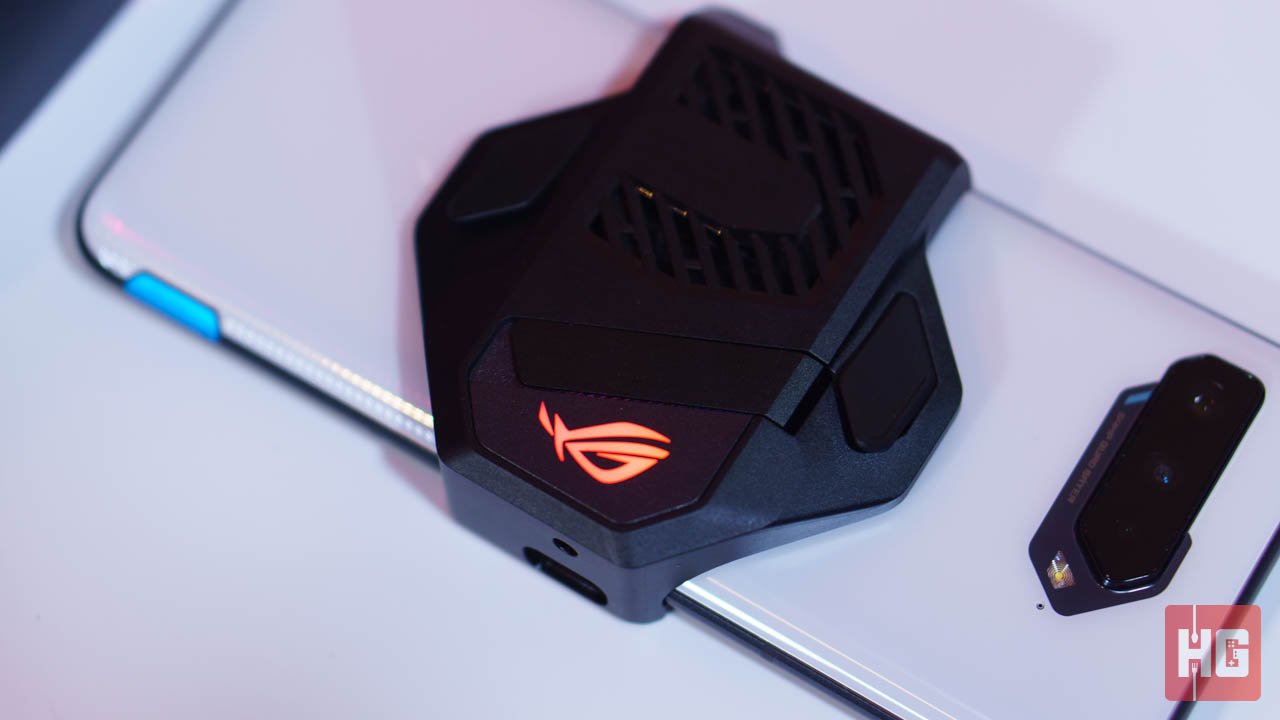
Fortunately, we do have the new AeroActive Cooler 5 on hand. It is beefier than last time. The fan stays the same size and the spring-loaded mounting mechanism has been replaced by a friction-fit chassis. The larger footprint of the device is thanks to the two additional bumper buttons at the back, which gives the smartphone more controls. Of course, it also has a built-in stand as well as RGB lighting.

The ASUS ROG Phone 5 comes with a slightly larger 6.78-inch 2448 x 1080 144Hz AMOLED display compared to its predecessor. Peak brightness has been increased to around 1,200nits and the panel supports HDR10+ and 112.23% DCI-P3 coverage. The screen also gets a top-of-the-line Corning Gorilla Glass Victus protection.
The smartphone’s display is a joy to look at every time we use it. Details on videos and images are crisp while colors are vivid. Blacks are deep and does not have any kind of bleed thanks to the AMOLED panel. Games that support 144Hz are especially fun and fluid to play on the device thanks to its fast refresh rate.
Color performance can be tuned via the settings menu where you can choose from Standard, Natural, Cinema, and Default. All four have varying characteristics that boost different colors or turns up the warmth of the display.

Its dual front-facing speakers deserve a special mention as they provide one of the best audio experiences found in a smartphone in our opinion. The speakers are found at the top and at the bottom of the display and they can deliver a booming, yet detailed listening experience. It seems that ASUS has figured out how to fit in a small stereo speaker inside a smartphone.
In addition to the its already impressive sound performance, ASUS is also throwing in some software wizardry via the AudioWizard. Several presets can be immediately used such as Dynamic, Music, Cinema, and Game. For those who like to manually adjust audio settings can do so through the built-in Equalizer, which spans from 60Hz all the way to 20KHz.

The ROG Phone 5 has received a bit of a redesign this generation, but the broad strokes of the ROG aesthetic is still there. Aside from the rounded corners at the side, most of the lines on the device are angled or straight to give it an aggressive look. Two colors will also be available this generation: Phantom Black and Storm White. The latter we received for this particular review.

The camera module at the top left remains the same look as its predecessor but the rear looks have been radically changed. Most of the rear now has the same aesthetic as the ASUS ROG Zephyrus G series notebooks, specifically the AniMe Matrix design. Tiny dots litter the back of the smartphone but only a small portion designated for the ROG logo actually has RGB lighting.

There are also writing and angled shapes at the middle to reflect an Evangelion or Gundam-esque look to further accentuate the futuristic look that ASUS is aiming for in their ROG Phone lineup. Overall, the design feels really solid to the touch although rear can be too smooth and can lead to accidental slips.

The device’s volume rocker and power button are all located at the right-hand side. All three provide a decent actuation experience with just the right amount of resistance to avoid accidental presses.
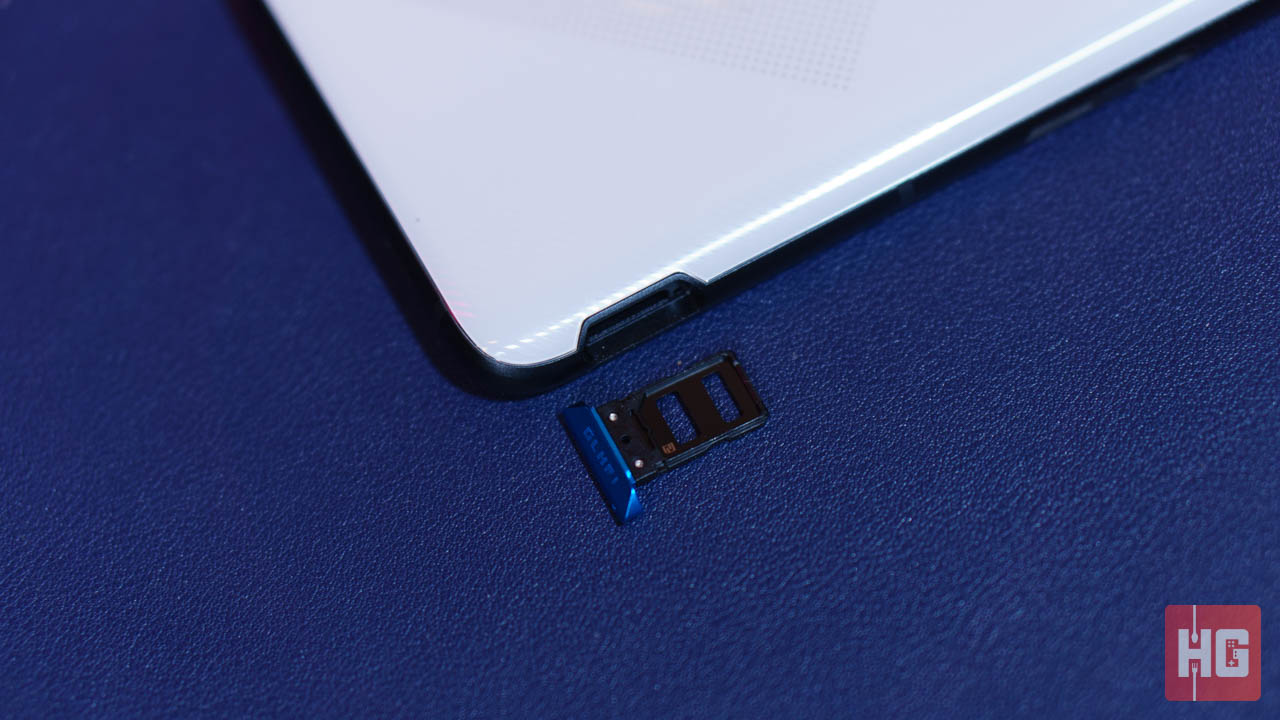
Meanwhile, the SIM tray can only carry one SIM 5G SIM card and does not have the option for storage expansion. It is cleverly hidden in the Blue-hexagon shaped object near the bottom left of the device. Again, the KeyStone feature found on the ASUS Strix notebook series.
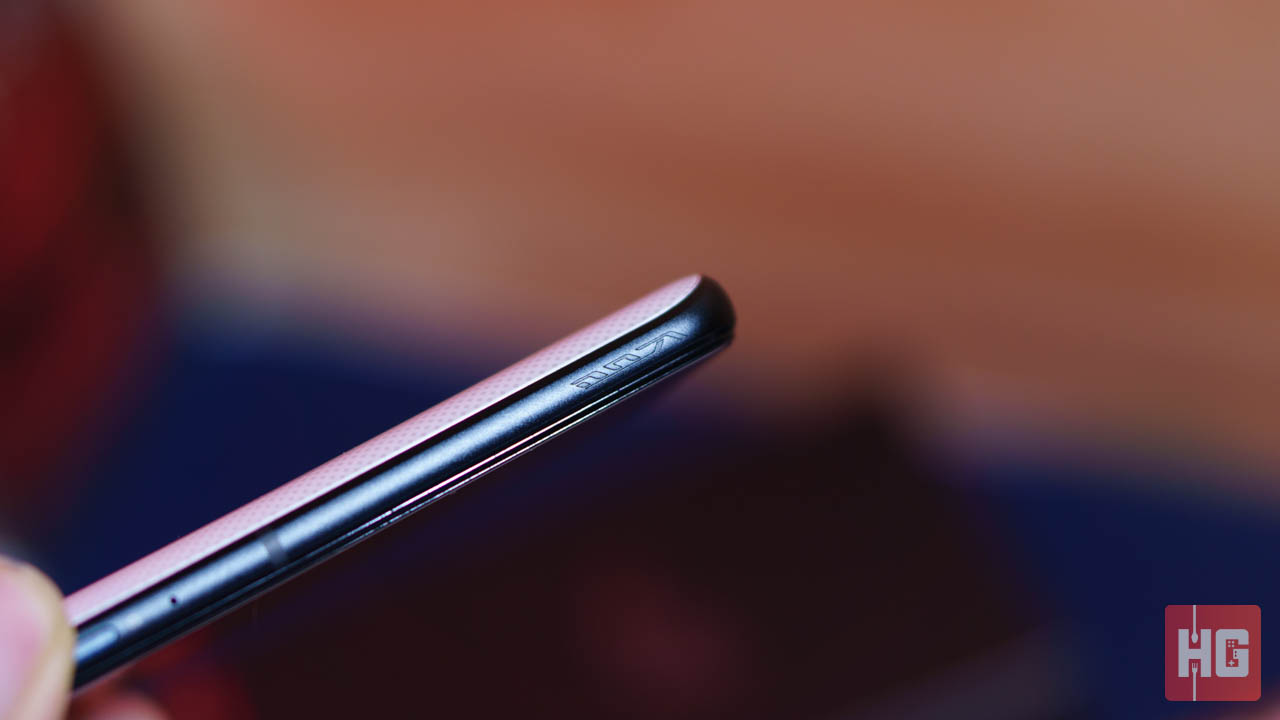
The number of USB Type-C ports on the ROG Phone 5 has been reduced to 2 compared to the three on the ROG Phone 3. The Type-C port formerly used to dock the AeroActive cooler and other accessories has now been turned into a female 5-pin contact point for future accessories to use.
The remaining USB Type-C ports are located at the bottom and at the left-hand side. Both can be used for the smartphone’s 65W charging, transferring data, and using Type-C based accessories like earphones.
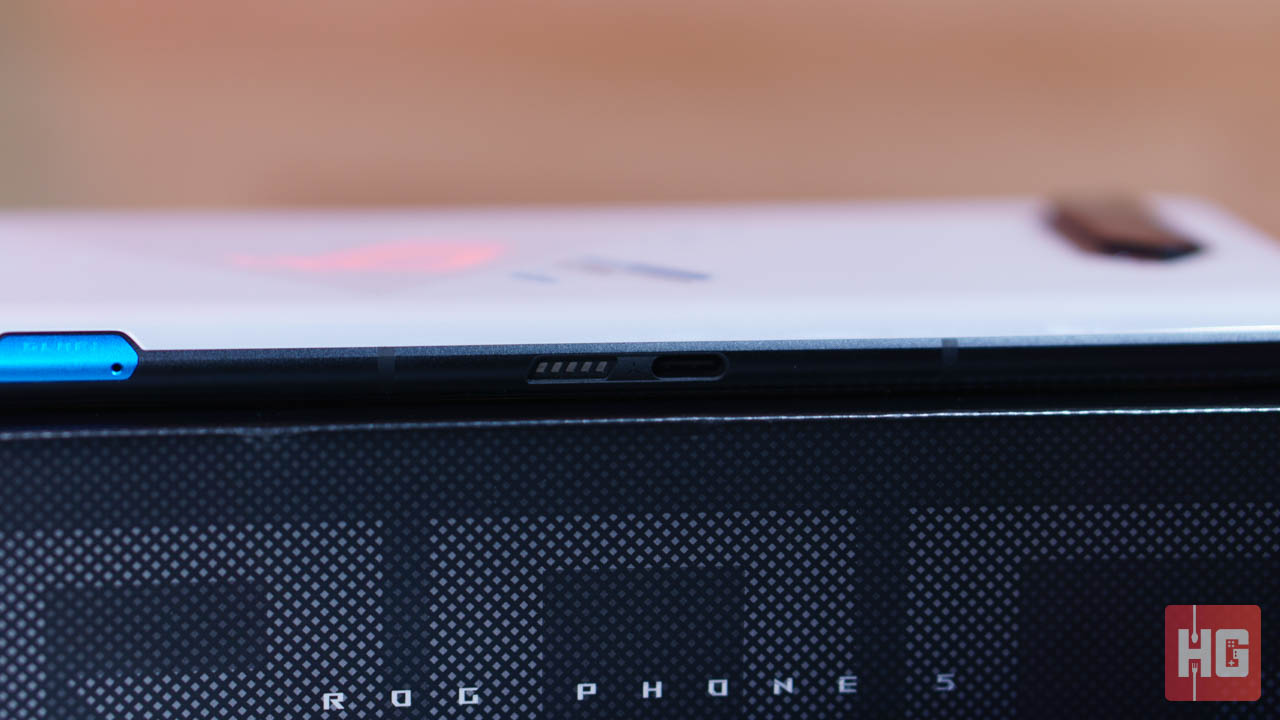
AirTriggers are making a comeback and are still located near the edges of left and right-hand side of the device. Both can be used to add another button input to games instead of just tapping the screen. This allows for a more ergonomic gaming experience and may lead to a quicker reaction time while playing.
Android 11 with ROG UI is automatically installed upon receiving the ROG Phone 5. Everything feels like an aggressively reskinned version of the vanilla Android experience found on other smartphones. Everything found here is relatively standard like quick toggles for the smartphone’s refresh rate, dark mode, as well as support for multi-window apps.

Game Genie does return to allow gamers to quickly monitor statistics like temperature, GPU, CPU and RAM usage, as well as battery life. It also lets users to seamlessly access other toggles like screen record, brightness, and background process termination.
The only real difference on the ROG UI, in terms of functionality, is the Armoury Crate. Its shortcut is immediately placed at the middle of the bottom tray and lets you access some of the more interesting options and features on the smartphone.
One of the highlights in the ROG Phone 5’s software suite is the Armoury Crate. Its icon is immediately noticeable in the bottom tray of the menu. It gets you access to some of the more interesting options of the device like RGB lighting, Game Management, hardware preferences, as well as switch to and from varying degrees of performance modes.

The ROG smartphone lineup may focus more on performance and battery life but that does not mean that they get anemic in the camera department. The ROG Phone 5 does come with only a triple camera setup but its main lens is a 64MP f/1.8 shooter powered by a Sony IMX 686 sensor and is backed by a 13MP f/2.4 ultrawide, and a 5MP f/2.4 macro lens.
Photos taken by the 64MP f/1.8 primary lens are not industry-leading but nothing to scoff at either. Left at auto, pictures can come out quite detailed especially in the correct lighting. There’s enough color to make stills look natural but striking. HDR performance is also reasonable allowing for bright backgrounds and subjects to easily meld together in a cohesive photo.
Its 13MP f/2.4 shooter is of a mixed bag in our opinion. Details are fairly reasonable in the middle but there is significant banding and distortion at the edges. It won’t be noticeable to most users depending on what kind of landscape or wide-angle photo they are taking.

As we have mentioned before, we have a bit of distaste for macro lenses as they are usually 2MP f/2.4 shooters that can only get close but not get the detail needed. The 5MP f/2.4 macro lens on the ROG Phone 5 does fair better due to the increased megapixel count and reasonable preservation of detail and color.
Selfies are taken by a single 24MP f/1.8 front-facing lens hidden beneath the Victus glass. Faces come out natural without much of artificial intervention. Photos are also decent when taken in dim locations but can become a bit more challenging in darker situations.
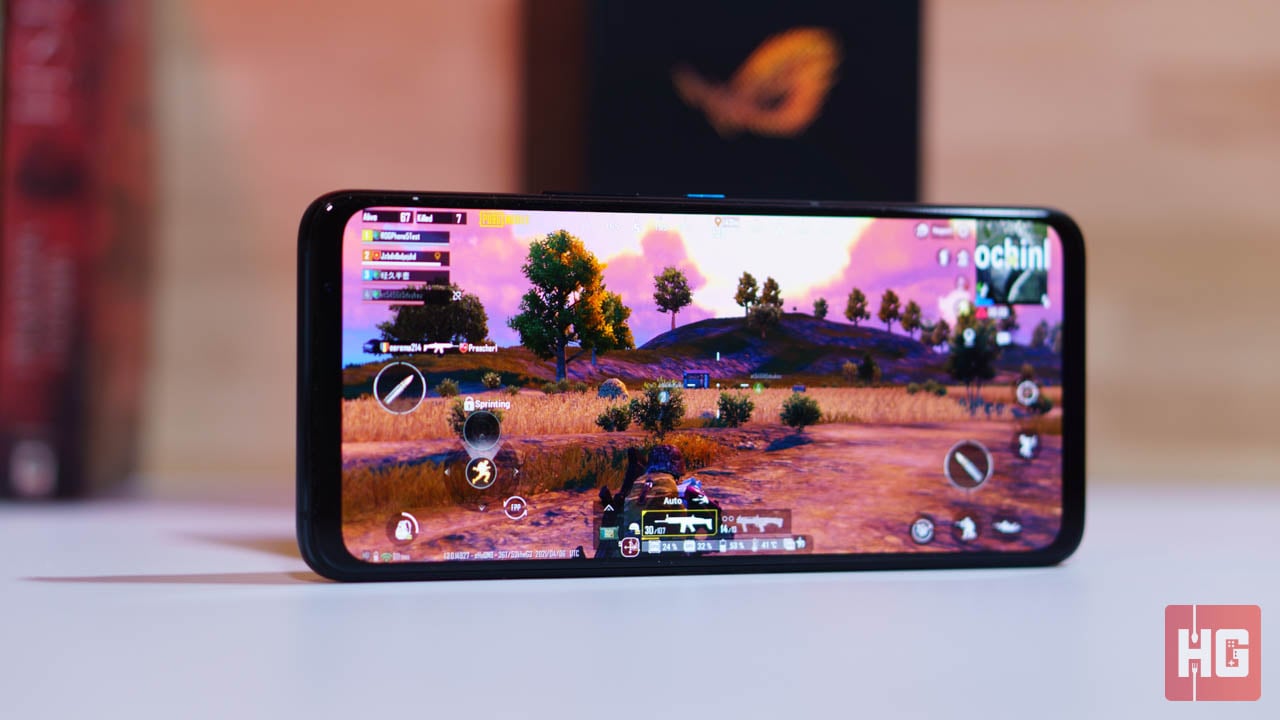
This is where the ROG Phone 5 truly shines: performance and battery longevity. Let’s start off with the former. Giving its performance is a Qualcomm Snapdragon 888 with 16GB of LPDDR5 and complemented by 256GB of UFS 3.1 internal storage.
It’s no secret that the chipset powering the smartphone is a flagship-class beast. But thanks to a larger 3D Vapor chamber and the help of the AeroActive Cooler 5, the ROG Phone 5 is able to run at higher clock speeds by activating X Mode by long pressing the bottom AirTrigger.
Numbers pumped out while the smartphone is running at X Mode is nothing short of spectacular. Previously challenging benchmarks like 3DMark Sling Shot Extreme just tapped out and maxed out the possible score. PCMark 2.0 reaches a score of nearly 15,000 while AnTuTu breaches easily breaches the 800,000 mark.
While synthetic benchmarks are all well and good, the true nature of the ROG Phone 5 is shown in games. We ran a few games including mainstream games like PUBG Mobile, Call of Duty Mobile, and Mobile Legends: Bang Bang. We also tested 144Hz-compatible games like Injustice 2 and Vainglory.
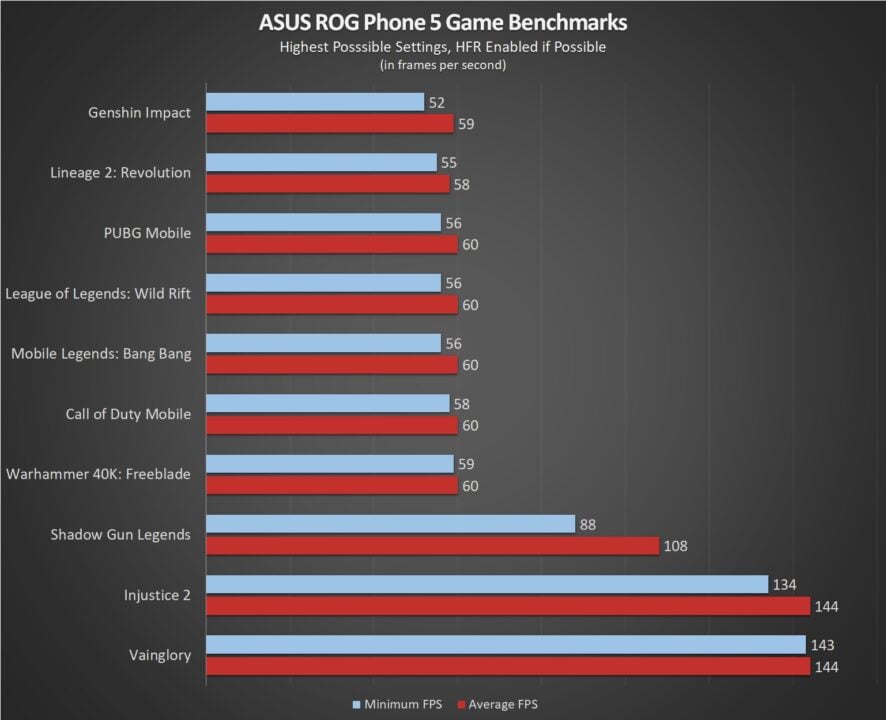
Graphics performance is a non-issue with the smartphone. Every title ran at around 60fps on average while 144Hz-supported games comfortably stayed at a minimum of only 134fps+ mark giving very little in between the average of 144fps.
It seems that the only real problem of the ASUS ROG Phone 5 is the lack of titles that support high refresh rate displays. Luckily, you can find a list of titles that support 120Hz or 144Hz via the Armoury Crate.
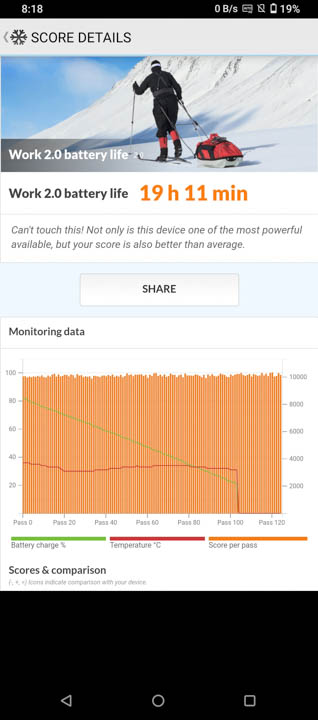
One would think that the ROG Phone 5 will drink all the power it can given the performance it can provide. Thankfully, the device comes with a sizeable 6,000mAh battery that can run up to 19 hours in PCMark 2.0 battery test with medium volume and brightness.
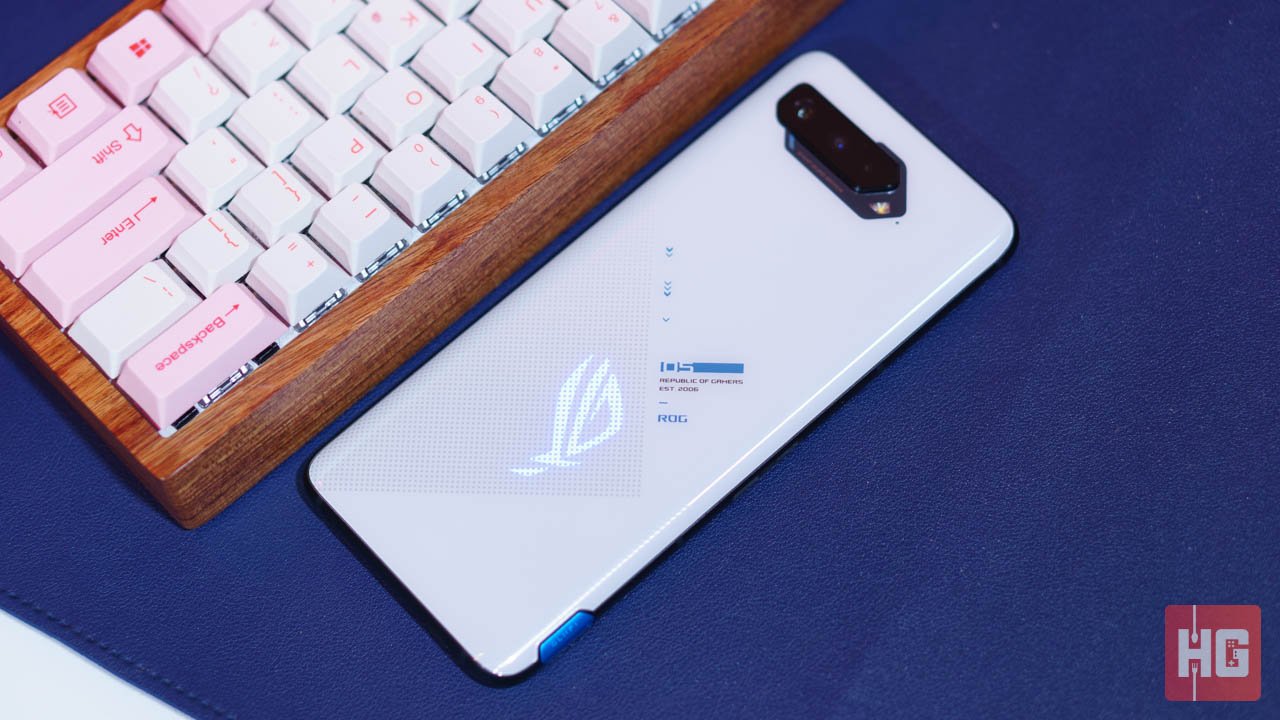
In a more realistic environment, we lasted around a day and a half with medium usage with occasional gaming running on X Mode with the AeroActive Cooler 5. Further battery savings can be found by toggling the display to a slower mode like 60Hz. Fortunately, waiting in between charges is kept at a minimum thanks to its 65W charging capabilities.
ASUS has also made strides to keep the battery as healthy as possible in the long run by using an MMT design with lower cell impedance. This allows for a lower battery temperature of up to 46% which should keep the battery trotting a long for a longer period of time.
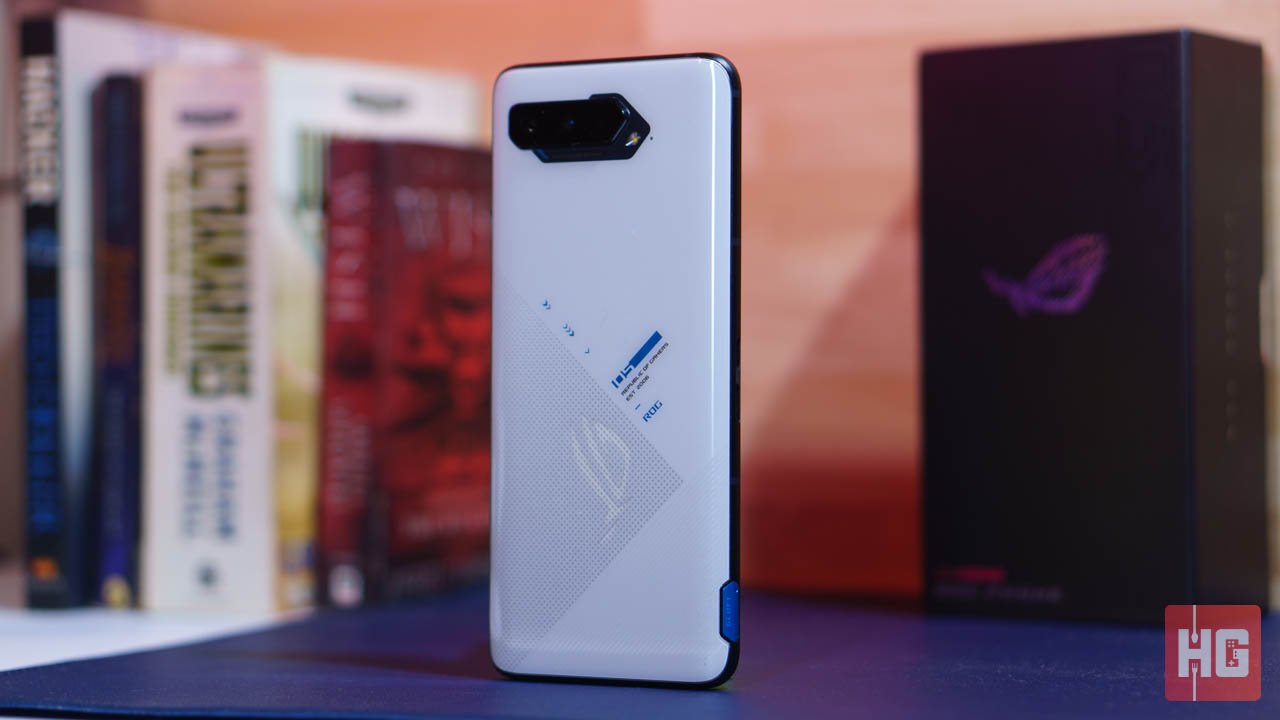
When you boil everything down to the basics, not much has changed with the ROG formula with the ASUS ROG Phone 5. ASUS is still offering an overkill experience in the performance department while improving battery life, charging speeds, and gaming options for the high-end mobile gamer.
There are some annoyances, however, in this refresh of the ROG smartphone lineup. It is a tad disappointing that the AeroActive Cooler 5 will not come bundled anymore and now remains a separate purchase. Some accessories have also become incompatible or have only partial compatibility due to the new contact points at the side.

While camera performance is decent given what it is, photos taken are far from the quality that we expect from a flagship-class smartphone. But I guess this is fine, since ASUS isn’t really focusing on the imaging department on the ROG series.

Taking everything into consideration, the ROG Phone 5 is one of the best gaming smartphones in the market. With a near-unparalleled gaming performance and software support to boot, those who are live and die by mobile gaming will definitely appreciate this powerhouse.
Pricing and availability for the ASUS ROG Phone 5 are still unavailable in the Philippines at this time. We expect it to be similarly priced with the ROG Phone 3 when it was originally announced last year. More information about the arrival of the smartphone in the Philippines should be available when it launches on April 10, 2021.
